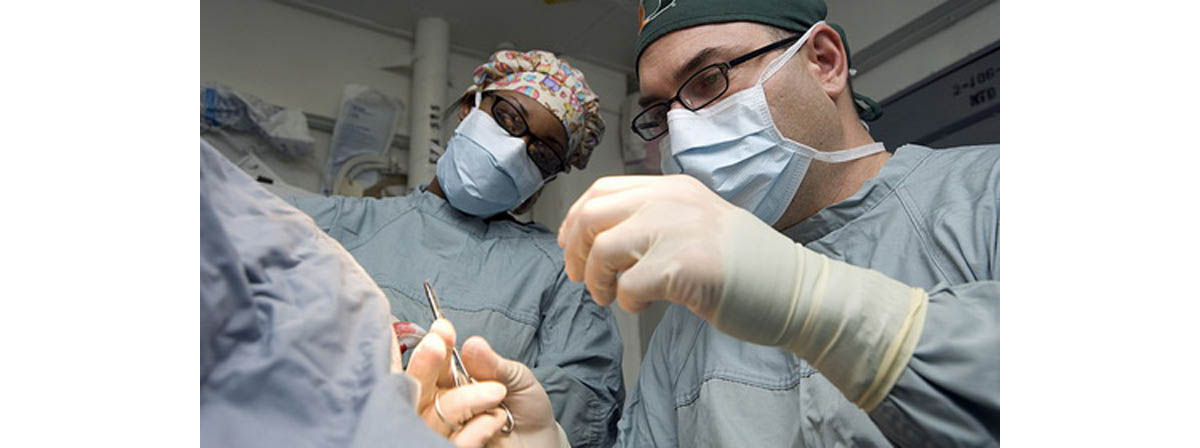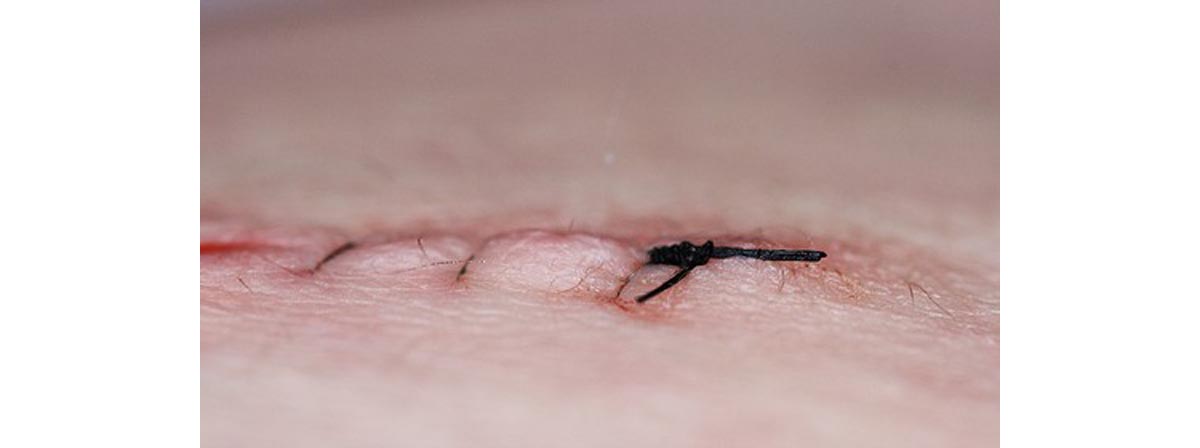About half a million people every year just in the United States develop serious complications when surgical incision sites become infected.

The skin is the body's natural barrier against infection. Anything that breaks the skin can lead to an infection of the tissues beneath it. When an infection occurs on a site where an operation took place, doctors refer to the resulting tissue as a surgical site infection or SSI.
Post-operative infections occur after about 3% of surgeries in the USA. About 5% of hospital patients acquire a treatable nosocomial infection during their hospital stay. Altogether about 1.7 million Americans per year catch infections while hospitalized, and 99,000 die of those infections. Patients and their insurance companies pay an addition $28 billion to $45 billion per year, just in the United States, for treatment of hospital-related infections.
How Can You Recognize a Surgical Site Infection?
Additionally, SSI's can manifest themselves as:
- Wounds that just don't "look right."
- High body temperature.
- Rapid pulse combined with low blood pressure.
- Discharge of clear fluid, pus, or blood from the wound. These discharges may smell bad.
- Swelling beyond the incision site that does not go down even after 5 days.
- Failure of the wound to close after weeks or even months.
Especially in the very young and the very old, symptoms may be subtle. The blood pressure may fluctuate, high, low, and normal. There may be an inexplicable fussiness in infants or crankiness in seniors. The patient may snore more than usual. There can be loss of appetite, chills, moderate to severe fatigue, and unusual, vague aches and pains.
What Should You Do If You See Symptoms of a Surgical Site Infection?
Surgical site infections (SSI's) are not something you should treat on your own. Especially since some of the microorganisms that enter wounds during or after surgery can cause pneumonia, blood poisoning, gangrene, or sepsis, it is important to see a doctor right away when symptoms of SSI appear.
It usually takes a doctor to determine whether the infectious microorganism is a bacterium, a fungus, a virus, or a parasite, and the doctor may be aware of other cases in the hospital that make identifying the offending pathogen easier. Only the doctor can determine the right medication (antibiotics will not always work), and it is important to take the entire course of treatment so an even more virulent strain of the infection won't take over.
Negative Pressure Wound Therapy (NPWT)
In particularly persistent cases, the doctor will prescribe negative pressure wound therapy, which is also known as NPWT. In this treatment technique, negative pressure siphons off blood, pus, fluids, and microorganisms to keep them from accumulating in the wound.

Typically an NPWT system consists of a vacuum pump, a gauze or foam wound dressing, a drainage tube, and an adhesive sheet that covers the wound. The problem with NPWT is that the vacuum pump requires the use of a bulky cannister that makes moving around difficult.
The negative pressure draws blood, pus, and exudes into an absorbent pad from which the moisture in them evaporates. The pump is used for a week and then thrown away (as medical waste) so there is far less danger of becoming reinfected by using the same equipment over and over again.
PICO is cheaper than other pumps, and because the device is disposable, there is less paperwork required for keeping track of it. Users are not put at risk of infection by prior users of the device, because there are no prior users of the device. The PICO pump is advertised as "dress, press, and go," and may reduce the amount of time users need to stay in the hospital.
Frequently Asked Questions About PICO
Q. How is PICO different from dressing a wound in moist gauze?
A. PICO applies negative pressure over the wound to pull infection out. The layers of moist gauze traditionally used to treat wounds are not necessary with PICO.
Q. What kinds of wounds are especially suited to treatment with PICO?
A. Most wound care experts prefer the device for treating wounds on the abdomen or groin.
Q. How is using PICO different from using NPWT?
A. The PICO pump works silently, without the 24 hour per day hum of NPWT pumps. There is no cannister to lug around, and dressings can be changed less frequently.
Q. Does the PICO always last seven days?
A. When there is heavy drainage, it may be necessary to change the device--throwing it away--sooner than seven days.
Q. Does PICO use any gauze at all?
A. The ACTICOAT pad used to cover the wound is treated with silver to kill bacteria. One of the advantages of the silver coating on the pad is that it can treat methicillin-resistant Staphylococcus aureus (MRSA), which is otherwise very difficult to control. The pad used with PICO is especially porous and can absorb the 300 to 400 ml (a little over 1 to a little over 1-1/2 cups) of fluid many wounds release in a week.
Q. Do I have to pay extra to get PICO?
A. The cost of the wound treatment system is typically covered in the cost of an operation, since it is applied in the operating room. However, be sure to discuss wound care with your doctor before you have surgery.
- Pullen LC. H2O2 Vapor Technology Improves Hospital Infection Control. Available at http://www.medscape.com/viewarticle/777738. Accessed 28 August 2013.
- Tablan OC, Anderson LJ, Besser R, Bridges C, Hajjeh R. Guidelines for preventing health-care--associated pneumonia, 2003: recommendations of CDC and the Healthcare Infection Control Practices Advisory Committee. MMWR Recomm Rep. Mar 26 2004.53:1-36.
- Photo courtesy of U.S. Navy photo by Mass Communication Specialist Seaman Apprentice Karolina A. Martinez by Wikimedia Commons : commons.wikimedia.org/wiki/File:US_Navy_120120-N-JN664-004_Lt._Cmdr._Howard_Pryor,_a_Navy_doctor,_stitches_an_incision_
- Photo courtesy of Quinn Dombrowski by Flickr : www.flickr.com/photos/quinnanya/3429981840/

